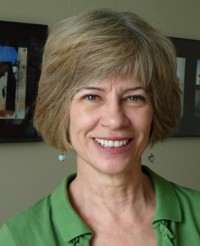Seeking transit
Taras Grescoe is a straphanger: he prefers and relies on public transportation for day-to-day travel. He’s not hesitant to use a car occasionally, but he’d rather be on a train, bicycle or just on foot. His passion for these modes of travel has taken him to cities around the world, where he test-rides their trains and investigates the relationship of the system to the city, its history and its plans for the future.
He begins his book with an overview of China, where sales of 14 million cars a year now exceed car sales in the U.S. At the same time, air pollution—already the worst in the world—is getting worse. In Shanghai’s car-choked metropolis, says Grescoe, “the air people breathe has officially become a health hazard.”
It’s important that we in the developed world, who are well into our infatuation with automobiles, inform ourselves more quickly about alternatives. The good news: although in the past public transportation has been scorned as necessary only for those who are too poor or too decrepit to drive a car, it is fast becoming the chosen alternative in U. S. urban areas.
There is a revolution happening, says Grescoe, in cities like New York; Montreal; Tokyo; Philadephia and Portland, Oregon. Residents of these cities are finding that incorporating public transportation into their lives is giving them better lifestyles. Instead of opting for suburbs and a tedious commute, young adults and families are building lives near subways, trains and even streetcar networks—and discovering the joys of being close to parks, cultural and sporting activities, and shopping centers.
In Tokyo he sees train drivers gesturing as if mad and talking to themselves with “Yoshi, ikou! (OK, let’s go!)” and “Jyuro tesihi ichi yoshi!” (Ten-car stop position, OK!). Grescoe learns that the apparent insanity is actually a required pointing-and-calling system that has reduced on-the-job errors by 85 percent by keeping train drivers alert.
In L.A., he reports that despite ongoing efforts to bring more mass transit to the area, the city struggles with the continuing need to use land for parking spaces—and with an unstated belief that public transportation is still only for those who don’t have cars. They seem to echo what Margaret Thatcher said of any man over 40: “[If he] finds himself on a bus, [he] can count himself as a failure.”
When considering if an urban setting is an appealing place to live, Grescoe looks for the ratio between “experience and pavement.” That leaves out L.A., with its miles of freeways and the necessity of spending time on them before one can have “experiences” of being in community, at the theater or going for a swim. Closer to the top of his list of desirable cities are Freiburg, Germany; Tokyo; Philadelphia and Paris. And one more—Grescoe and his wife choose Montréal.
What strikes me, as I remember growing up in small towns and walking to stores, library, schools and church, is that new urban residents have chosen their neighborhoods because they provide a similar experience. Urbanites are finding that when they do not have to get in the car every day, they have more time to be part of a neighborhood, to be out in green spaces planned for them and their children—and they want more of these experiences, and less pavement.
What this means for our towns is another story. Perhaps our economically depressed and emptying towns will one day become a new frontier; hopefully some of the towns that are going through the pain of demise will one day be repopulated. But this may not happen until “pioneers” head out to try life away from urban centers, or until a later phase of vision and planning brings reliable public transportation out to meet them.







